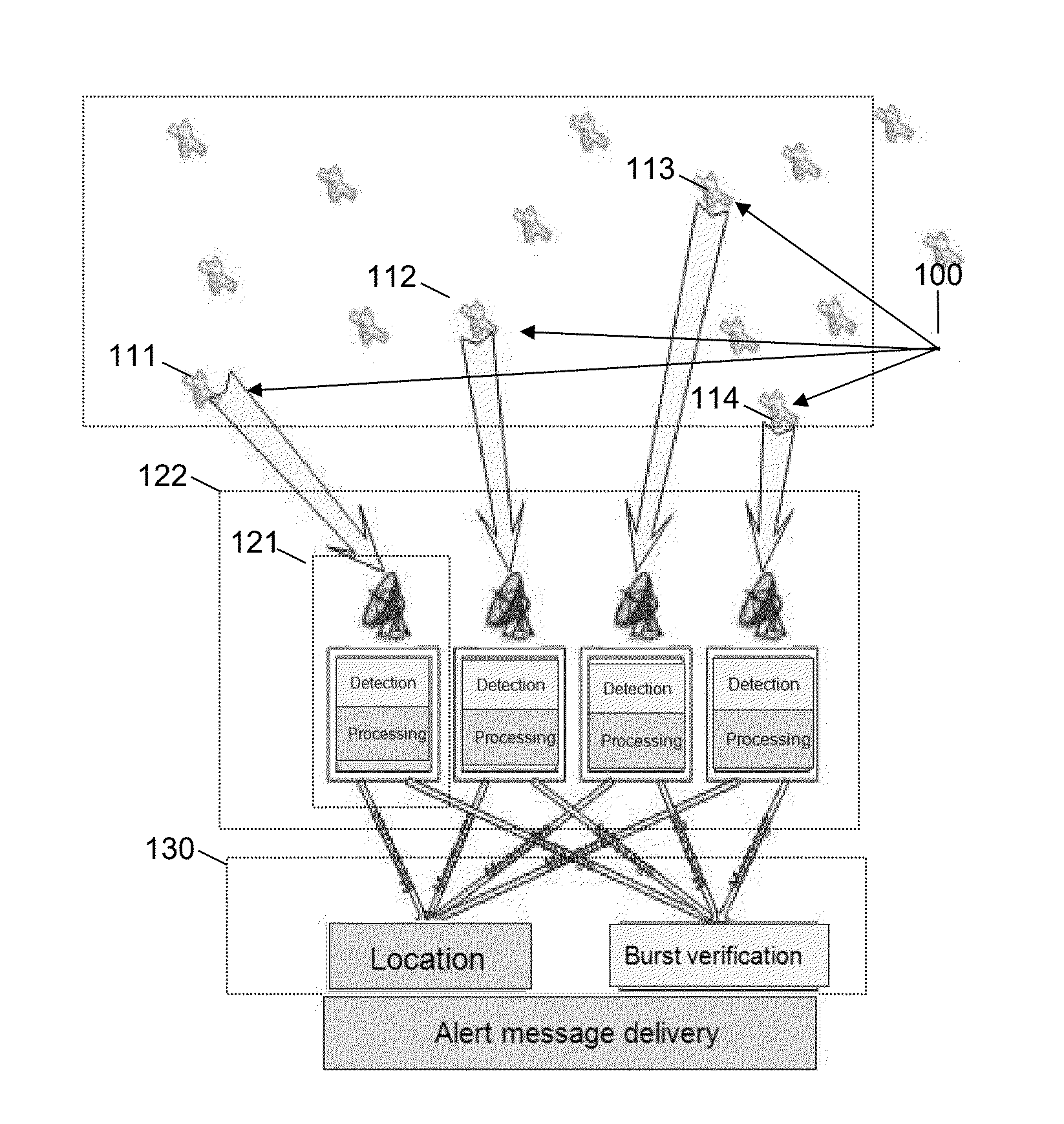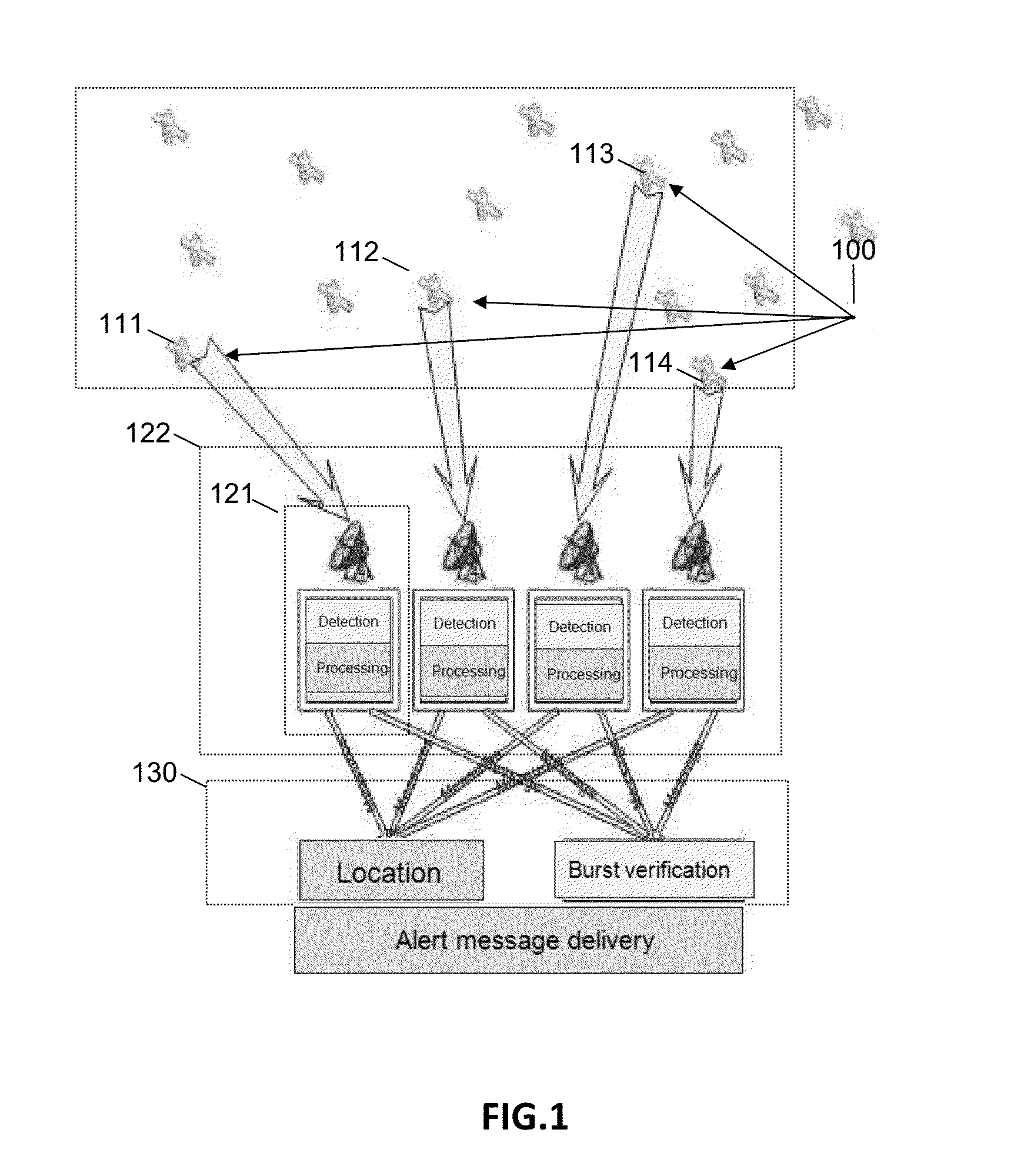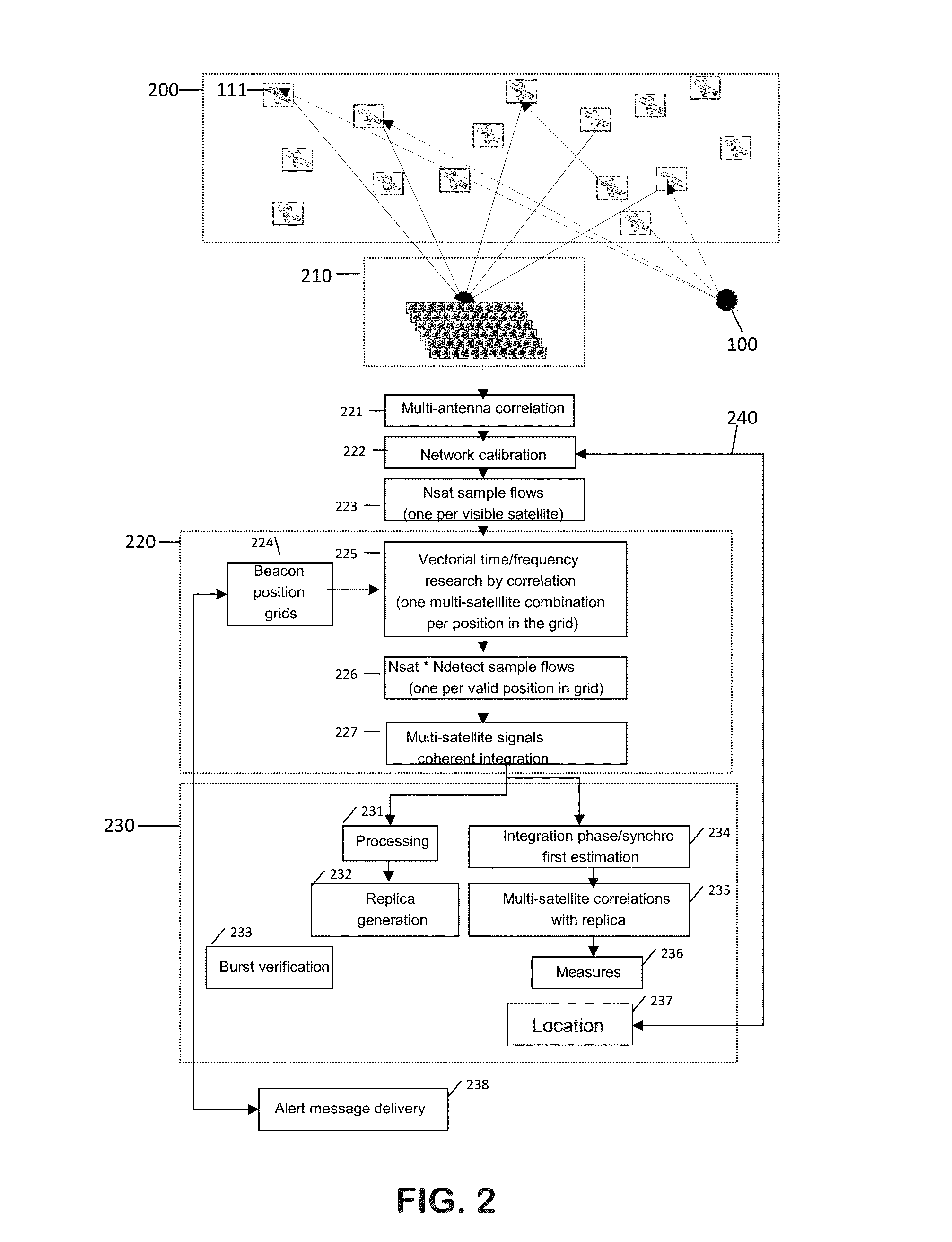Location of a distress beacon
a beacon and distress technology, applied in the field of satellite communications, can solve the problems of poor signal processing sequence, 10 db degradation, and link budget reduction with respect to the current leosar version, and achieve the effect of improving signal processing sequence, avoiding significant cost impact, and optimizing the calibration of the antenna array
- Summary
- Abstract
- Description
- Claims
- Application Information
AI Technical Summary
Benefits of technology
Problems solved by technology
Method used
Image
Examples
Embodiment Construction
[0069]FIG. 1 illustrates the overall operation of the existing methods for locating a distress beacon. A beacon 100 transmits an electromagnetic signal, which is received by four satellites 111, 112, 113 and 114, from among a constellation of satellites. These four satellites forward the distress signal to the ground stations. The MEOLUT ground station 122 is made up of stations 121 of LEOLUT type. At the present time, around ten MEOLUT stations 122 are deployed worldwide. A LEOLUT 121 is associated with one antenna and sees just one satellite. Each LEOLUT station performs four successive FOA / TOA (time of arrival, frequency of arrival) measurements, with a Doppler measurement (the Doppler effect being strong at low altitudes). With four LEOLUT stations forming one MEOLUT, the beacon is located (the position of the satellites is known at each instant), with one single “burst”.
[0070]According to the prior art, these various stations 121 do not work together. The processing channels ar...
PUM
 Login to View More
Login to View More Abstract
Description
Claims
Application Information
 Login to View More
Login to View More - R&D
- Intellectual Property
- Life Sciences
- Materials
- Tech Scout
- Unparalleled Data Quality
- Higher Quality Content
- 60% Fewer Hallucinations
Browse by: Latest US Patents, China's latest patents, Technical Efficacy Thesaurus, Application Domain, Technology Topic, Popular Technical Reports.
© 2025 PatSnap. All rights reserved.Legal|Privacy policy|Modern Slavery Act Transparency Statement|Sitemap|About US| Contact US: help@patsnap.com



